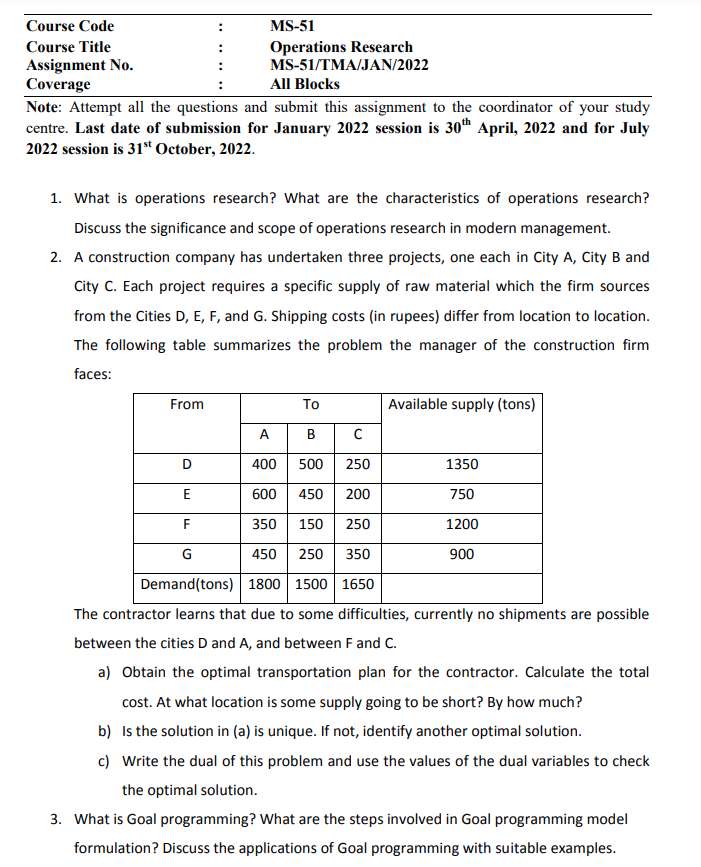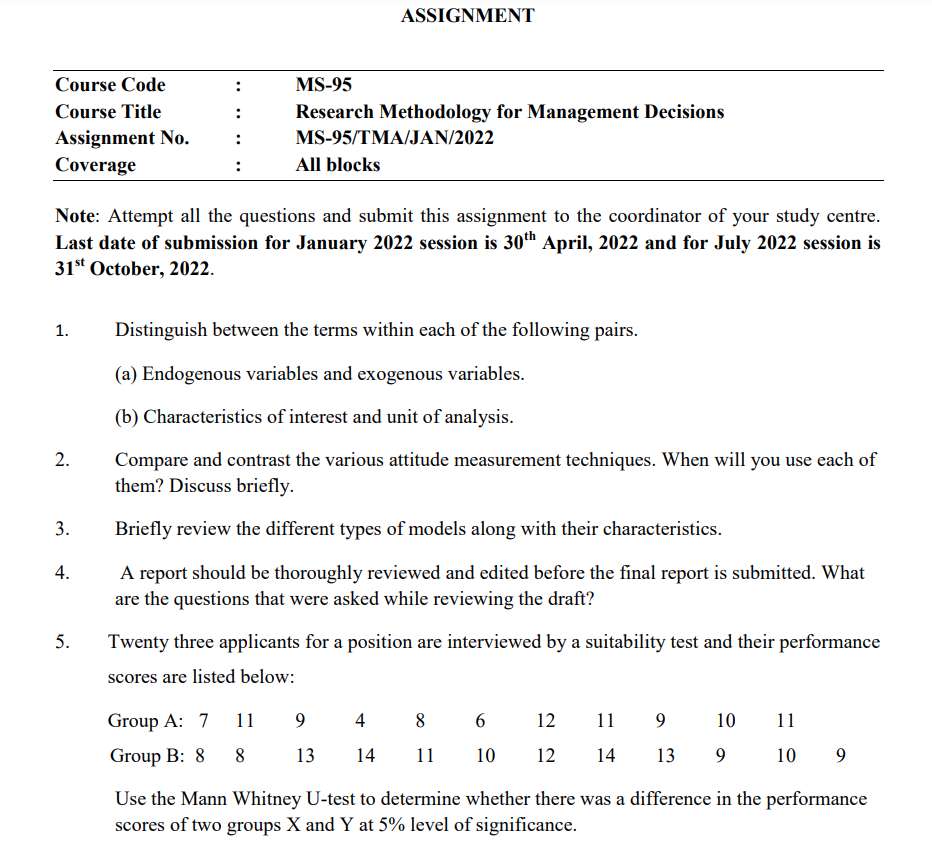- Your cart is empty
- Continue Shopping
MFN-005 Clinical and Therapeutic Nutrition
Solved Assignment 2021-2022
Clinical and Therapeutic Nutrition (MFN-005)
CourseCode:MFN-005
Assignment Code: MFN-005/AST-2/TMA-2/2021-22
Last Date of Submission: 31stDecember,2021
| Title Name | MFN-005 Solved Assignment 2021-2022 |
| University | IGNOU |
| Service Type | Solved Assignment (Soft copy/PDF) |
| Course | Master of Science in Dietetics and Food Service Management |
| Language | ENGLISH |
| Semester | 2021-2022 Course: M.Sc. (DFSM) |
| Session | July 2021 session |
| Short Name | MFN-005 |
| Assignment Code | MFN-005/AST-2/TMA-2 /21-22 |
| Product | Assignment of M.Sc. (DFSM) 2021-2022 (IGNOU) |
| Price | RS. 60 |
This assignment is based on Units 1 -19 of the MFN-004 Course.
Section A -Descriptive Questions
There are eight questions in this part. Answer all questions.
(80
marks)
1. a) Define medical nutrition therapy and discuss the role of a dietitian in nutrition and
health care.
b) What is the nutrition care process? Elaborate highlighting its various dimensions.
(1+4)
(5)
2. a) Enlist the types of dietary adaptation you would recommend to suit the therapeutic
needs of the patients.
b) What are the routine hospital diets and the mode of feeding you would recommend as
a dietitian in a hospital? Elaborate.
c) List the salient features of the diet you would prescribe to a patient suffering from
tuberculosis.
(3)
(4)
(3)
3. a) Give the salient features of the nutritional management of the following
diseases/disorders:
i) Type II Diabetes
ii) Diverticular Disease
iii) Liver Cirrhosis
b) Enlist the nutrient requirement for a low term or premature infant.
(2+2+2)
(4)
4. a) Enlist major points for dietary management of a patient suffering from chronic renal
failure.
b) Give important goals of nutritional care of persons with neurological disorders.
c) “Drug Nutrient Interaction” is an important consideration in the nutritional
management of Parkinson’s disease. Justify the statement giving appropriate
examples.
(4)
(3)
(3)
5. a) Enumerate the modifiable risk factors that increase the risk for developing heart
diseases. Also give dietary modifications for congestive cardiac failure.
b) Give the classification of blood pressure and stages of hypertension in adults.
(5)
(3)
8
c) What are the complications of Rheumatic Heart Disease? (2)
6. a) Define the following inborn errors of metabolism and also give dietary management of
these diseases:
i) Phenylketoneuria
ii) Galactosemia
iii) Maple Syrup Urine Disease
b) Name the enzyme whose deficiency causes homocystinuria.
(3+3+3)
(1)
7. a) Briefly discuss the classification and the dietary modification for obesity.
b) What is Anorexia Nervosa? Briefly discuss the nutritional management of Anorexia
Nervosa.
(5)
(5)
8. a) Enumerate the risk factors associated with the etiology of cancer. Briefly discuss the
nutrient requirement of cancer patient.
b) Briefly discuss the role of purines and proteins in the precipitation and management of
Gout.
c) What do you understand by ketogenic diet? Under what conditions you would
recommend this diet?
(5)
(3)
(2)
Section B – OTQ (Objective Type Questions)
1. Define/explain the following in 2-3 sentences each: (10)
i) Ebb Phase
ii) Jejunostomy
iii) Wilson’s Disease
iv) IUGR
v) Cystic fibrosis
vi) Aneurism
vii) Somgyi effect
viii) MODS and SIRS
ix) Glycemic Index and Glycemic Load
x) Cushing’s syndrome
2. Give examples of the following: (10)
i) Low residue foods.
ii) Rich sources of PUFA
iii) Drug-Nutrient Interaction
iv) Gluten free food sources
v) Low sodium food products
vi) Foods avoided in viral hepatitis
vii) Foods avoided in gastritis
viii) Foods avoided in GERD
ix) Non-nutritive sweeteners
x) Rich sources of vitamin B12
MFN-005, MFN 005, MFN005, MFN-05, MFN05, MFN 05, MFN-5, MFN5, MFN 5


















Reviews
There are no reviews yet.